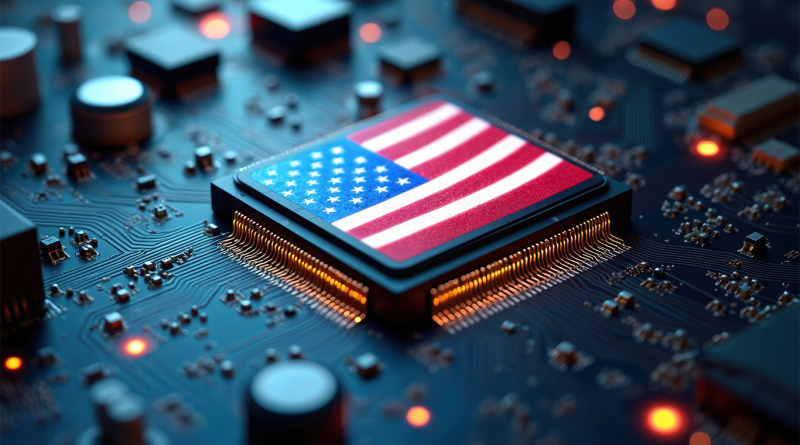Nvidia Commits $500B to AI Chipmaking in North America
Subscribe to our free newsletter today to keep up to date with the latest manufacturing news.
Nvidia is investing up to $500 billion over the next four years to manufacture artificial intelligence chips and related infrastructure in the United States. This marks a significant departure from its traditional reliance on Asian manufacturing and reflects rising concerns about supply chain stability and geopolitical risk.
AI chip demand is growing rapidly across industries like data centers and autonomous vehicles. By producing chips in North America, Nvidia aims to secure its supply chain and align with U.S. government priorities to increase domestic semiconductor output.
To support this initiative, Nvidia is partnering with companies including TSMC, Foxconn, Wistron, Amkor, and SPIL. New facilities are being planned in Phoenix, Arizona, and across Texas, helping to build out a regional AI manufacturing ecosystem.
Why Nvidia is pulling manufacturing out of Asia
Rising U.S.-China tensions have triggered new tariffs and restrictions on critical chipmaking materials like gallium and germanium. With tariffs reaching up to 145 percent on Chinese goods, companies such as Nvidia face heightened operational risks.
Manufacturing domestically reduces exposure to international policy shifts and aligns with national interests in technological sovereignty. Governments are increasingly backing efforts to localize the production of critical technologies, and Nvidia’s decision positions it as a strategic partner in that effort.
$500 billion investment and new manufacturing partnerships
Nvidia’s investment is one of the largest commitments to U.S.-based chip production to date. The funds will support fabrication, packaging, and assembly of AI chips, as well as the infrastructure required for large-scale production.
TSMC is building out its foundry capacity in Arizona, and Nvidia plans to tap into this for advanced chip fabrication. Foxconn and Wistron will handle system integration and high-volume manufacturing. Amkor and SPIL will take care of testing and packaging, which are the essential final stages before chips are shipped to customers.
Facility locations were chosen for their established semiconductor ecosystems and access to technical labor. Arizona and Texas also offer favorable business environments and incentives under the CHIPS and Science Act, which provides grants and tax credits for domestic semiconductor projects.
The future of AI chip supply: national security and demand growth
AI capabilities are now embedded in many sectors, including enterprise software, automotive, and consumer technology. The chips that enable these capabilities are seen as strategic assets, prompting governments to take action to ensure their availability.
U.S. policy is increasingly focused on technological self-reliance. The CHIPS Act is a central part of this strategy, aiming to reduce dependence on foreign suppliers. Nvidia’s move directly supports that goal.
As demand for AI chips continues to outpace supply, Nvidia’s decision to localize production addresses two challenges: it reduces geopolitical risk and helps stabilize chip availability for high-demand sectors. For long-term projects that rely on consistent chip access, this is a significant advantage.
Can North America become the next chip powerhouse?
Nvidia’s plan reflects a shift in the global semiconductor landscape. For decades, chipmaking was dominated by Asia, but that model is being reconsidered. North America is now emerging as a viable alternative.
With support from public and private sectors, states like Arizona and Texas are developing into key semiconductor hubs. These regions offer proximity to talent, research institutions, and infrastructure tailored for high-tech manufacturing.
Job creation is expected to follow, with roles spanning engineering, operations, logistics, and more. Workforce development programs are already being launched to address the labor needs of this growing industry.
Still, Nvidia’s move is a strong signal that North America is ready to take on a greater share of global chip production. By localizing AI chip output, the company is both supporting economic growth and improving long-term supply resilience.
Sources:
